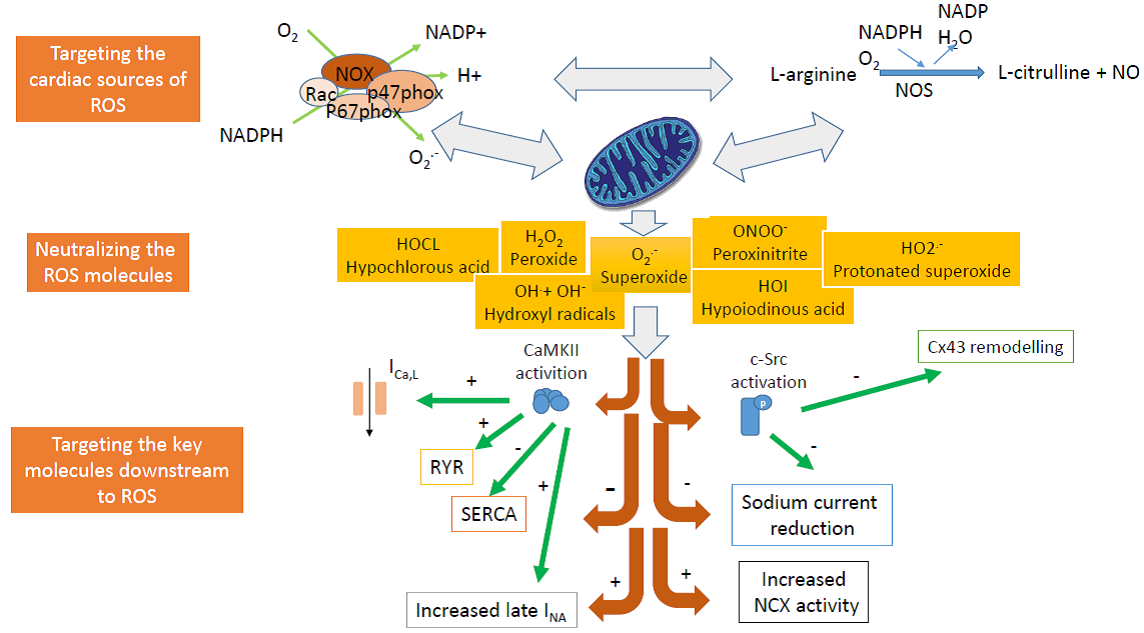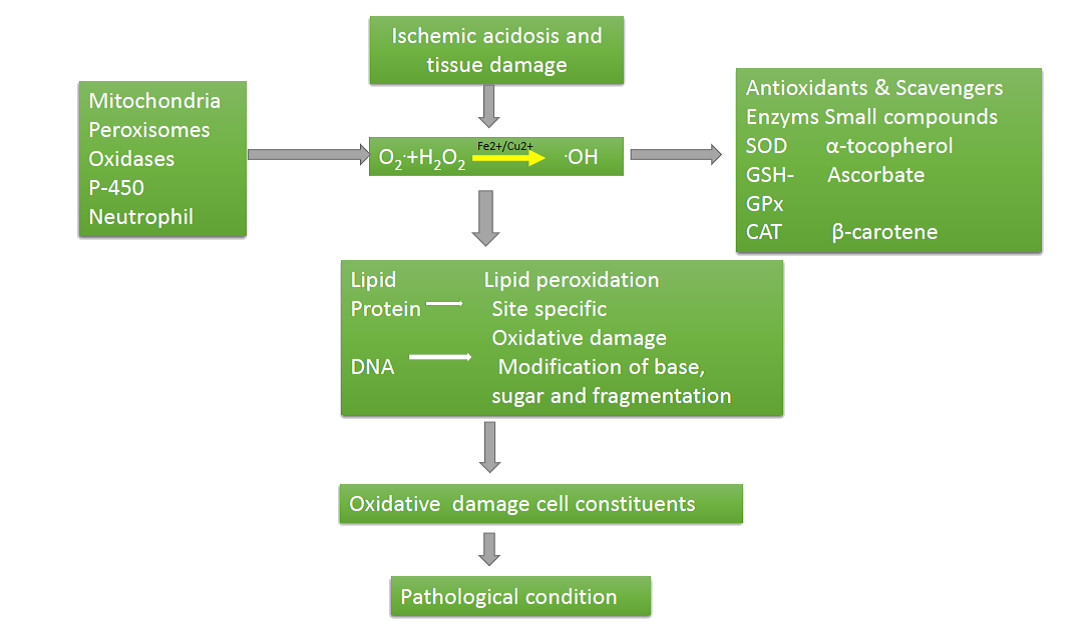Cardiac sources of ROS
Numerous cellular sources of ROS generation found in the mitochondria, such as the enzyme nicotinamide adenine dinucleotide phosphate (NADPH) oxidase, and uncoupled nitrix oxide synthase (NOS) are considered the major ROS production systems in the human heart. Those sources of cardiac ROS are interrelated and often activation of one results in activation of the others (Fig. 1).
The NAD(P)H oxidase is an enzyme that uses NAD(P)H to reduce molecular oxygen and produces large amounts of superoxide radicals. ROS are generated as a primary product of the NAD(P)H oxidase system, rather than a byproduct as they are in the mitochondrial system. Although NAD(P)H oxidase activity was first described in macrophages, a number of NAD(P)H oxidase isoforms (the Nox family) have been discovered in variety of nonphagocytic cells and Nox1, Nox2, and Nox4 have been detected in the heart. Nox activity is regulated in part by angiotensin II. Uncoupled or dysfunctional nitric oxide synthases (NOSs) are other important sources of ROS. There are three major isoforms of NOS enzymes: inducible NOS (iNOS), endothelial NOS (eNOS), and neuronal NOS (nNOS). Their basic function is the oxidation of the terminal guanidine nitrogen atom of L-arginine by using electrons from NADPH to produce NO, as shown:
2 L-arginine + 4 O2 + 3 NADPH + 3H+ => 2 L-citrulline + 2 NO + 3 NADP+ 4 H2O

Figure 1: Different sources of ROS

Figure 2: Effects of ROS and the oxidative injury leading to pathological conditions